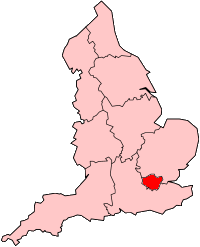- HubPages»
- Travel and Places»
- Visiting Europe»
- United Kingdom»
- England
Visiting Liberty's, London, England: Striking, Tudor Revival Style, Dating From 1924, & the Fluidity of Traditionalism




Fine, traditional architecture, craftwork and fabric products, variously perceived.
[This short hub article, about a visit made a number of years ago, is limited to some historical and architectural aspects of this building in London, England. For any aspect of the services of this fine department store, contact should be made directly with its management.]
So first of all the name, Liberty's, as it is often known: as a distinguished department store known for quality, artistic clothing and furnishings and accessories, does the store's historic name denote some kind of subliminal reference to a supposed elation of spirit which may alleged be obtained through the pursuit of materials on offer at the department store?
Actually, no. It refers instead to the name of the original proprietor. Sir Arthur L. Liberty founded the store in 1875. Previously in Regent Street, the store's current building dates from 1924.
Also, in relation to the department store's name, it is strictly 'Liberty' (i.e., without the apostrophe and 's') but it is so widely known as 'Liberty's' that I have used this form also (1).
In recent years Liberty's has expanded its scope to opening outlets in airports.
Sir Arthur Liberty developed a strong professional relationship with designer Archibald Knox (1864-1933)(see below) and others, who were identified with Art Nouveau or the Arts and Crafts movement (2). Interestingly, the Art Nouveau style of many of Liberty's products was so closely identified with the store that for example in Italian the usual term for Art Nouveau is 'Stile Liberty'.
Features of the building include its Tudor Revival styling (sometimes referred to as Mock Tudor) incorporating a profusion of exterior wood panelling, high chimney stacks, and ornate stonework, including an archway under which pedestrians may pass. (This archway is vaguely reminiscent of similar styling at Hertford College, Oxford's 'Bridge of Sighs'.) The building was designed by Edwin T. Hall (1851-1923)(3). The interior of the building also uses much polished wood panelling.
Thus it has arguably come about that both Great Malborough Street building which houses the department store and the Art Nouveau / Arts and Crafts styles identified with the business in its earlier decades, are regarded as rather 'traditional' in nature.
This was not always so. In its time, some Victorians and Edwardians thought that Art Nouveau style was supposedly avant-garde; but interestingly even before the onset of World War One some art critics regarded it already as old fashioned.
While to 21st century eyes the Tudor Revival style seen at Liberty's would be regarded as very 'traditional', some architectural commentators such as Sir Nikolaus Pevsner are on record as having been scathingly critical of it for many reasons (Sir Nikolaus had a flair for scathing criticism!)
April 10, 2020
Notes
(1) Speculation: Perhaps the relative proximity of Selfridges has influenced this popular usage also? but I forbear to be dogmatic here.
(2) Other well known designers and illustrators with whom Sir Arthur Liberty had a business relationship included William Morris (1834-1896) and Dante Gabriel Rosetti (1828-1882). A proportion of the fabrics sold at Liberty's was manufactured at Merton Abbey Mills, Surrey.
(3) Other designs by Architect Hall — various members of whose family were also distinguished architects — include Dulwich College and Sloane Square. (interestingly the term 'Sloane Ranger', derived from Sloane Square, applies in popular usage to a particular perceived type of resident and pursuer of products of a certain style, typically identified also with shoppers at Edwin Hall's architectural creation at Liberty's; see also: http://www.slonerangerblog.com/2015/07/liberty-in-london.html . The term 'Sloane Ranger' corresponds approximately with the French 'bon chic bon genre'.) Edwin Hall's architect son Edwin Stanley Hall also worked on Liberty's Great Marlborough Street building.
Some sourcing: Wikimedia.org


Also worth seeing
London has such huge numbers of visitor attractions that I will refer to only a small fraction of the principal ones; these include: Trafalgar Square; the Houses of Parliament at the Palace of Westminster; Westminster Abbey; St. Paul's Cathedral; the Royal Albert Hall; and many others.
...
How to get there
United Airlines flies from New York Newark Airport to London Heathrow Airport, where car rental is available. Underground and train services link Heathrow Airport with Central London. Liberty's at Great Marlborough Street is closest to Oxford Circus Underground Station on the ... Lines. Please note that some facilities may be withdrawn, without notice. You are advised to check with the airline or your travel agent for up to date information.
MJFenn is an independent travel writer based in Ontario, Canada

Other of my hubpages may also be of interest
- Visiting Selfridges, London, England: Beaux-Arts, Pillared Splendour With Art Nouveau Features, Dati
The pillared spendour of Selfridges, at 400 Oxford Street, London, England, is associated with some interesting World War Two history. The building was designed by Daniel Burnham, and dates from 1909. - Visiting Canada House, London, England: Splendid, Canadian Hub on Historic Trafalgar Square
This Greek Revival building by Sir Robert Smirke, facing London's famous Trafalgar Square, dates from the early 19th century, but for many decades has had a remarkable historic association with Canada








